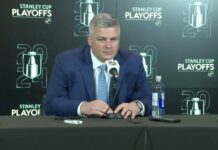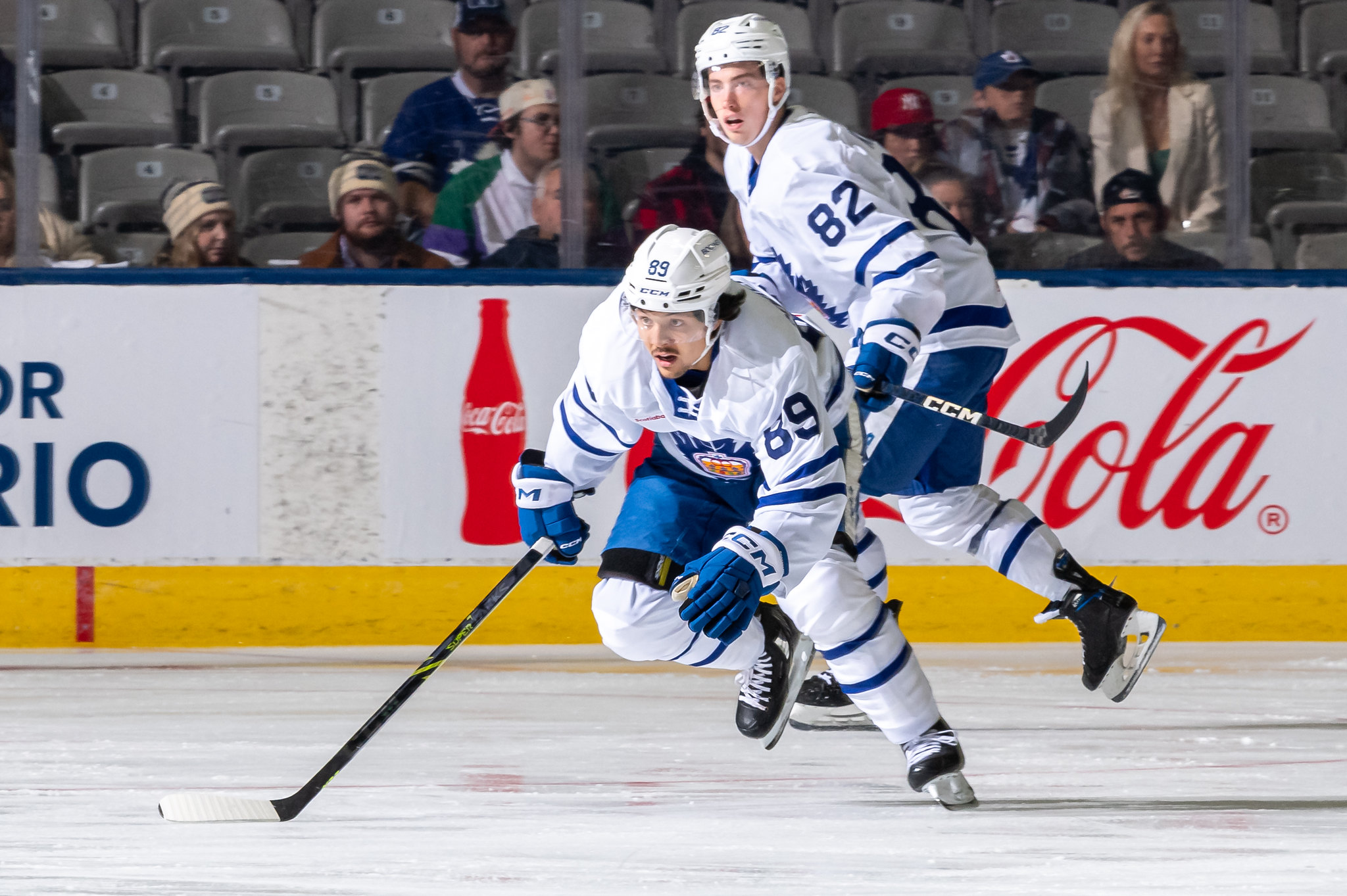Tough news broke today on Nick Robertson’s shoulder injury: surgery has been performed with a six-month rehabilitation timeline.
Injury updates:
Maple Leafs forward Nick Robertson had season-ending shoulder surgery and will be out for six months.
Toronto Marlies defenceman Mac Hollowell underwent surgery for a fractured kneecap and will be out a minimum of 12 weeks.
— Leafs PR (@LeafsPR) January 16, 2023
It was one of those that we wanted to give some time to rehab and see how it was going to go and re-assess from there. Over time, it was just determined that surgery was the best option for him.
In terms of what I have said to him — despite the adversity that he has had with his injuries, he has found ways each time to bounce back and still show progression in his game. It hasn’t seemed to have stalled him in terms of his development.
You saw the kind of training camp he had this year and how he came in. He gave us some good minutes at the NHL level. He has been in this situation before. We never question his work ethic and commitment. You know he will put in all the work to do what he can to bounce right back again.
– Sheldon Keefe on Robertson’s latest injury
To end up in this place — a season-ending injury after 17 games — following an outstanding preseason and training camp that earned Robertson an NHL spot is a gut punch to the player, to say the least. It was an opportunity that required a lot of patience and stick-to-itiveness in his fourth NHL training camp, and even then, it came a little bit delayed due to the organization prioritizing Denis Malgin’s waiver status.
The good news: Robertson is still only 21 — compare that to Bobby McMann breaking the roster right now at age 26 for perspective — and has shown an ability to mentally and physically persevere through multiple tough injuries in the past, including a non-displaced fracture in his fibula with the Marlies last season and a knee injury in his regular-season NHL debut back in October 2021.
The following is in no way meant as a criticism of Robertson at a time that must be really challenging for him mentally, but I think this is an important discussion if you’re the Leafs. I have been watching Robertson’s NHL shifts with one eye open due to a concerning reality about his game: He plays with a really hunched-over skating posture while standing just 5’9, and he is pretty courageous (which is admirable) about putting himself in harm’s way against much bigger opponents in puck battles and high-danger areas of the ice.
It’s going to be a project for the Leafs’ development and sports science teams to not just get Robertson’s shoulder and overall conditioning back to full strength but also to help him avoid vulnerable situations on the ice while still remaining a competitive and effective player. Otherwise, you fear this is going to be an injury cycle that repeats itself over and over again, which would be a real shame for a really talented young player and extremely motivated young professional.
Robertson sustained this latest injury in a strength battle below the goal line against 6’1, 205-pound LA Kings defenseman Matt Roy back in early December. He went to engage Roy shoulder-to-shoulder on the forecheck and was simply overpowered.
Nick Roberston was down after this
man… pic.twitter.com/UoEMqZT9SZ
— Omar (@TicTacTOmar) December 9, 2022
No doubt, there is a lot of bad luck involved in landing the wrong way on the ice, but there is also a really harsh lesson to be learned. Robertson is going to have to pick his spots and use his feet, stick, anticipation, and quickness as opposed to engaging way bigger players head-on in strength battles on the forecheck (there is a role model to learn from in the organization in Mitch Marner, albeit there are differences in size, playing and skating styles. Alex Debrincat — a trigger man with a similar build to Robertson — might be the more appropriate role model).
The organization’s development staff has a role to play in helping Robertson make the needed adjustments. In addition to some luck, there is a skill to staying healthy, and it’s one that’s critical for a player of Robertson’s size limitations. The awareness of danger on the ice is going to need to improve.
Here’s wishing Robertson a speedy and complete recovery. Hopefully, he comes back next season even stronger through yet another bout of adversity early in his pro career.


![Jim Montgomery Post Game, Bruins 4 vs. Leafs 2: “[Marchand] still manages to get under people’s skin, yet he doesn’t cross the line” Jim Montgomery, Boston Bruins post game](https://mapleleafshotstove.com/wp-content/uploads/2024/04/jim-monty-pg-to-218x150.jpg)
























![Jim Montgomery Post Game, Bruins 4 vs. Leafs 2: “[Marchand] still manages to get under people’s skin, yet he doesn’t cross the line” Jim Montgomery, Boston Bruins post game](https://mapleleafshotstove.com/wp-content/uploads/2024/04/jim-monty-pg-to-100x70.jpg)







